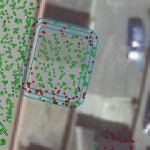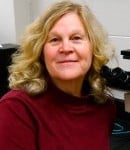The vice president for research is pleased to announce this year’s recipients of the Research Excellence Fund Awards, which total $515,000. Mark Plichta is among the recipients of an Infrastructure Enhancement Grant.
Read more at Tech Today.
The vice president for research is pleased to announce this year’s recipients of the Research Excellence Fund Awards, which total $515,000. Mark Plichta is among the recipients of an Infrastructure Enhancement Grant.
Read more at Tech Today.
Associate Professor Joshua Pearce (MSE/IMP), Associate Professor Durdu Guney (ECE/IMP), Associate Professor Paul Bergstrom (ECE/IMP) and Professor Emeritus Anand Kulkarni (ECE/IMP), “DMREF: Optical Enhancement and Engineering of Multi-junction Indium Gallium Nitride Solar Photovoltaic Devices,” NSF
 Associate Professor Joshua Pearce (MSE/ECE) coauthored an article, “The Application of LiDAR to Assessment of Rooftop Solar Photovoltaic Deployment Potential in a Municipal District Unit,” in the journal, Sensors.
Associate Professor Joshua Pearce (MSE/ECE) coauthored an article, “The Application of LiDAR to Assessment of Rooftop Solar Photovoltaic Deployment Potential in a Municipal District Unit,” in the journal, Sensors.
Senior Design Awards to MSE Projects
Taking first place was Bioabsorbable Polymer-Coated Metal Stent Degradation Simulation Design. The students devised a better way to check for the degrading of stents, which are inserted into arteries, both in vitro (in the lab) and in vivo (in the living subject). Team members were Kristina Price, Brendan Daun, Thomas Faulkner, Erin Larson, Derek Yesmunt and David Strobel (Biomedical Engineering); and Kelsey Waugh and Matt Gardeski (MSE). The team was sponsored by Boston Scientific and advised by Associate Professor Jeremy Goldman (Biomedical Engineering) and Associate Professor Jaroslaw Drelich (MSE).
Second place went to the Economic Recovery of Alloying Elements from Grinding Swarf. The students speculated that they could help metal-grinding operations reclaim cobalt and nickel, in addition to other metals, from the waste or “swarf.” It could produce as much as $1.75 million in a year. The team consisted of Alicia Steele (MSE/ME); and Daniel Hein, Michael Wyzlic and Nicholas Kraft (MSE). They worked with the Casting Services Group of ThyssenKrupp. Jaroslaw Drelich was their advisor, too.
 The Clair M. Donovan Award is awarded to a member of the faculty, staff, or student body of Michigan Technological University who has contributed the most outstanding service during the preceding year. The Michigan Tech chapter of Blue Key Honor Society sponsors the award.
The Clair M. Donovan Award is awarded to a member of the faculty, staff, or student body of Michigan Technological University who has contributed the most outstanding service during the preceding year. The Michigan Tech chapter of Blue Key Honor Society sponsors the award.
The recipient of the 2012 Clair M. Donovan award for service is Ruth Kramer, advisor in the material sciences and engineering department. Blue Key noted that Kramer not only shows a dedication to postsecondary education, but to secondary education as well: “She hosts many departmental outreach events which get high school teachers and students excited about the opportunities that Michigan Tech has to offer.
The Clair M. Donovan Award is awarded to a member of the faculty, staff, or student body of Michigan Technological University who has contributed the most outstanding service during the preceding year. The Michigan Tech chapter of Blue Key Honor Society sponsors the award.
John & Virginia Towers Distinguished Lecture Series
Abstract
Cellulosic biomass represents a potential resource for sustainable production of fuels and chemicals. When cellulose is hydrolyzed using mineral acids as catalysts, dark-colored, tarry solids known as humins form as undesirable by-products. The formation and growth of humins have been investigated using small batch reactors, and the resulting humins have been characterized, primarily using scanning electron microscopy and infrared spectroscopy. The aqueous phase free energies of proposed reaction intermediates have been computed using quantum chemistry. The experimental and computational results are consistent with a sequential pathway for the formation of humins. The primary reaction proceeds through the sequential conversions of cellulose to glucose (perhaps) to fructose to HMF to levulinic acid. The predominant pathway for the formation of humins involves the conversion to HMF to 2,5-dioxo- 6-hydroxyhexanal (DHH). DHH rapidly undergoes aldol addition/condensation with available aldehydes or ketones. The resulting adduct then polymerizes to form humins. The experimental studies have shown that humin morphology, size and size distribution are affected by solvent choice. It has also been established that chemical functional groups can be added to the humins during or after their formation. These finding might lead to ways to convert humins from a waste byproduct to a more valuable commodity.
Bio: Dr. Lund is a SUNY Distinguished Professor. He was a department chair from 1997 to 2006. He obtained his B. S. from Purdue University in 1976 and Ph. D. from University of Wisconsin–Madison in 1981. His research interests include heterogeneous catalysis for energy and environmental applications, reaction engineering of membrane reactors, and biomass conversion. He received many awards, including NSF Presidential Young Investigator, SUNY Chancellor’s Award for Excellence in Teaching, and Lilly Teaching Fellow. He published more than 70 peer-reviewed papers.